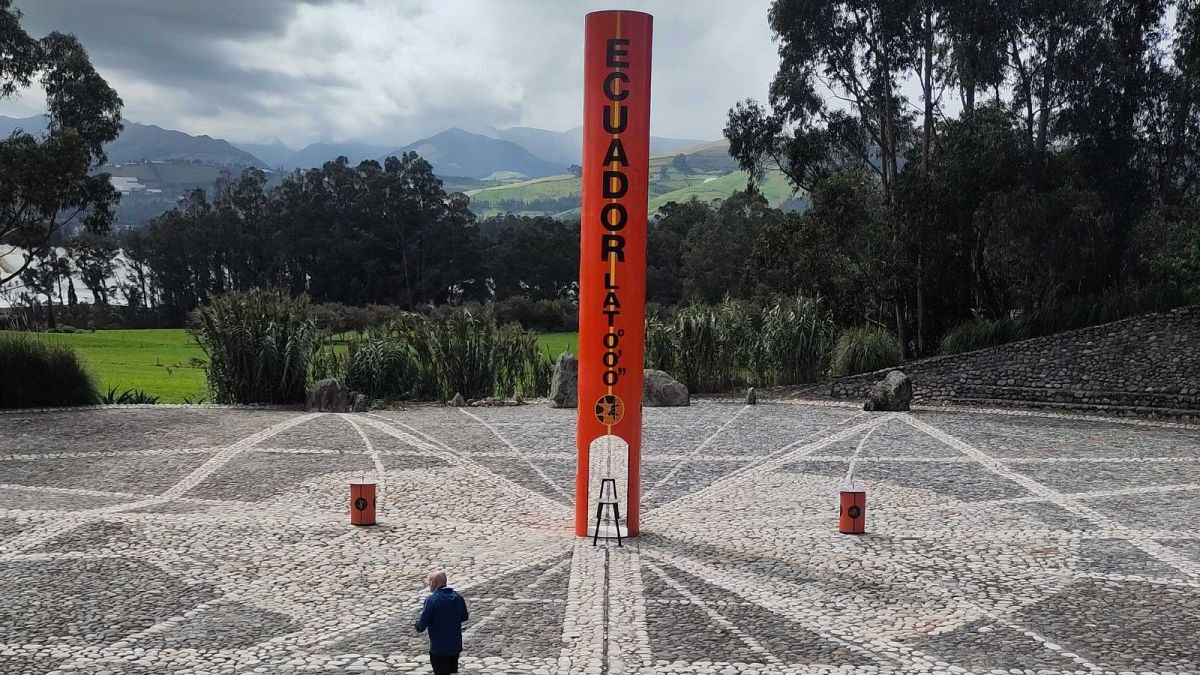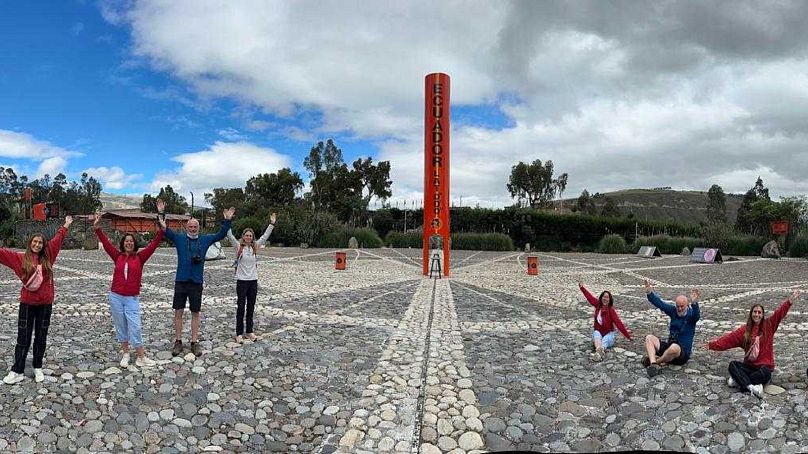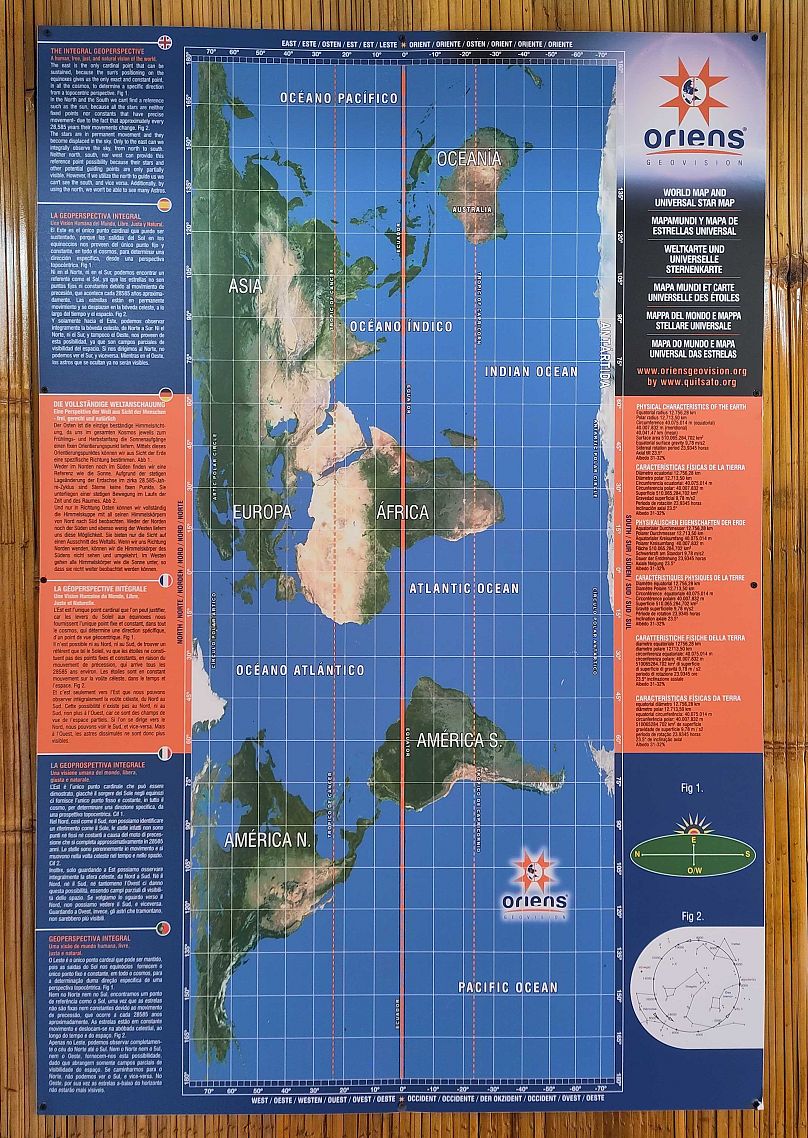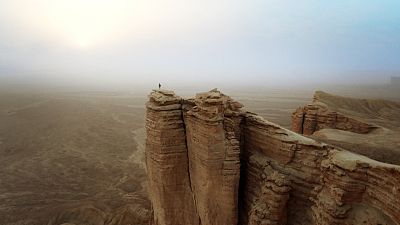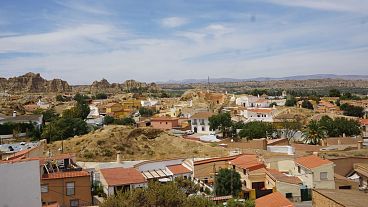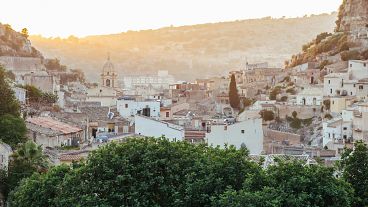Like a golden thread circling the Earth, the equator sprinkles a bit of tourist magic in 11 countries.
Before visiting Ecuador, the eponymous equator wasn’t the most eagerly-anticipated moment on my bucket list trip. There were giant tortoises to meet, cloud forests to climb and Indigenous markets to explore.
But the Quitsato Sundial, 50 kilometres north of Quito, was a surprise highlight. One that has made me an advocate for equator tourism.
Our Earth’s circle of latitude passes through 11 countries: Indonesia (which has the longest cut), Ecuador, Colombia, Brazil, the Democratic Republic of São Tomé and Príncipe, Gabon, the Congo, the Democratic Republic of the Congo, Uganda, Kenya and Somalia.
With the Midas Touch, it sprinkles a bit of tourist stardust wherever it goes - launching monuments, museums and, of course, lots of selfies.
I learnt that the equator can change your perspective if you let it: surely what travel is all about.
What is there to see at Ecuador’s equator?
Access to the Quitsato Sundial is through an unassuming solar museum, run by the nonprofit Quitsato organisation for $5 (€4.50) per adult.
Guides give an insightful and well-pitched talk about the equator and how it came to be established here, after 18th century scientists triangulated it from the Andes mountains.
Satellite technology has since confirmed this site near Cayambe city to be the true equator - unlike other tourist attractions with equatorial claims, the Mitad del Mundo monument, and the Intiñan Solar Museum. It’s also the highest country where you can visit the equator.
There’s plenty of time to pace around the main attraction: a 10-metre high orange pole set in the centre of the sundial, within a circular mosaic of pebbles that mark the solstices and equinoxes.
On a cloudless day the pole will tell you the time; casting no shadow at all when the sun is directly overhead at noon.
When I visited in July, my family and I had the 54-metre wide platform to ourselves, giving us the floor for fun photos. Including an equator classic: a panorama where you pose on one side then run behind the photographer to pose on the other side, placing you in both the northern and southern hemisphere in one fridge-worthy pic.
The equator could change the way you think about world maps
The part that really stayed with me is the ‘Ecuascope’ room - a floor-to-ceiling exhibit that aligns the equator to the stars, and exposes the arbitrariness of our world map.
Despite the north nearly always being shown at the top of the world, there is nothing inherently ‘up’ about the north. Historically, maps have put different directions on top depending on the prevailing worldview: east, towards sunrise for the ancient Egyptians, for example; south, towards Mecca for early Muslim cultures who were mostly north of it.
In 1569, Flemish geographer Gerardus Mercator drew the first map to take into account the curvature of the Earth, to help sailors navigate. He likely placed north up top because Europeans were doing most of the exploring at the time, suggests science writer Caroline Williams. Given how influential Mercator’s map was, Europe has been in the upper storeys of Earth ever since.
The Quitsato solar museum tilts your perspective, inviting you to imagine what it would be like if the equator were rendered as a vertical line, with the east on top. Its ‘integral geoperspective’ map makes the case that the east is the only cardinal point with a constant reference point: the sun.
Why does this matter? Well, as Williams writes, “evidence from psychology suggests that our north-up culture might be polluting the way we think of what is valuable in the world.”
Where else can you visit the equator?
A trip to the equator isn’t guaranteed to be profound. But if you’re already visiting one of these countries, it’s worth taking a small detour to straddle it.
Kenya’s equator signs
There are a couple of places where you can experience the equator in Kenya.
Nanyuki Town has a bright yellow sign by the road, with a number of souvenir shops. One ambivalent TripAdvisor review describes it as a “must do tourist trap”. For a small fee, you can see how the coriolis effect on water (whereby it normally turns clockwise or anticlockwise as it drains) becomes zero at 0 degrees latitude.
Ol Pejeta Conservancy - home to the last northern white rhinos on the planet - also has a sign, and is a more peaceful place to absorb the moment.
The Equator Monument in Indonesia
Known as “Equator City,” Pontianak is the capital of West Kalimantan province. Two miles north of the centre stands a small, free museum, housing the original monument first built on the site by a Dutch geographer in 1928.
A bigger monument was then built around it, turning the Equator Monument into a notable landmark.
It gets a mixed response from visitors too. “It's unfortunate that the area around the Monument is very poorly developed and maintained,” writes one tourist. “Go there just the same because of the wonder. Your physical presence in that part of the world is a great feeling, a reward by itself.”
You may want to time your visit for the spring and autumn solstices, when Pontianak city holds a party.
Uganda’s equatorial photo opportunity
There are also a couple of marked equator points to choose from in Uganda, when you’re not marvelling at mountain gorillas.
The easiest to reach is at Kayabwe, where the line crosses the Kampala-Masaka highway. Here a simple circular monument provides the perfect photo opportunity for a lasting memory.
“I was surprised at how interesting it was to stop off at the equator,” writes one TripAdvisor reviewer. Nearby souvenir shops and restaurants get a generally positive write-up too.












